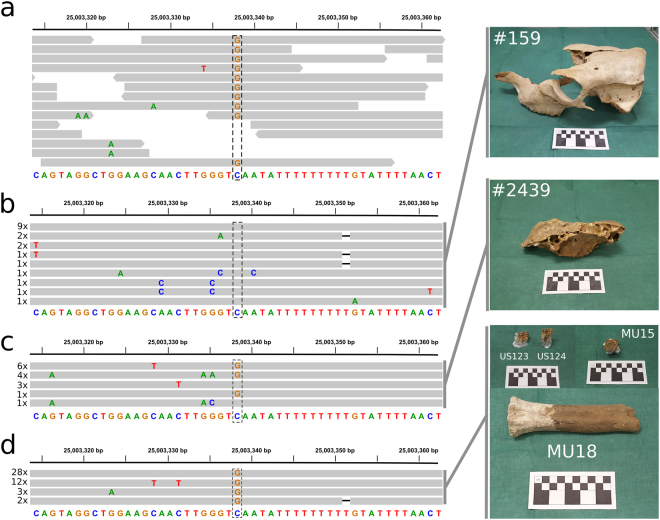Figure 7.
Insights on the age of Q from rs109231213 genotypes in ancient DNA. (a) Alignments of next-generation sequencing data reported by Park et al.45 from a >6,000 years old bovine humerus found in England. This specimen carried a qq genotype, as evidenced by all reads (horizontal grey bars) presenting allele G at rs109231213 (dashed rectangle). (b) A polled cranium (specimen #159) from ~1,000 yBP was recovered from a ritual gathering site in Hofstadir, Iceland46. Target-sequencing of its petrous bone revealed a QQ genotype (i.e., all clones exhibited allele C at rs109231213). (c) A second polled cranium (specimen #2439) recovered from Skalholt and dating >300 yBP returned a heterozygous genotype. (d) Two molar teeth from a Medieval site in Northern Italy (US123 and US124) and a molar tooth (MU15) and a long bone (MU18) belonging to the late Roman age (>1,700 yBP) all presented qq genotypes.

